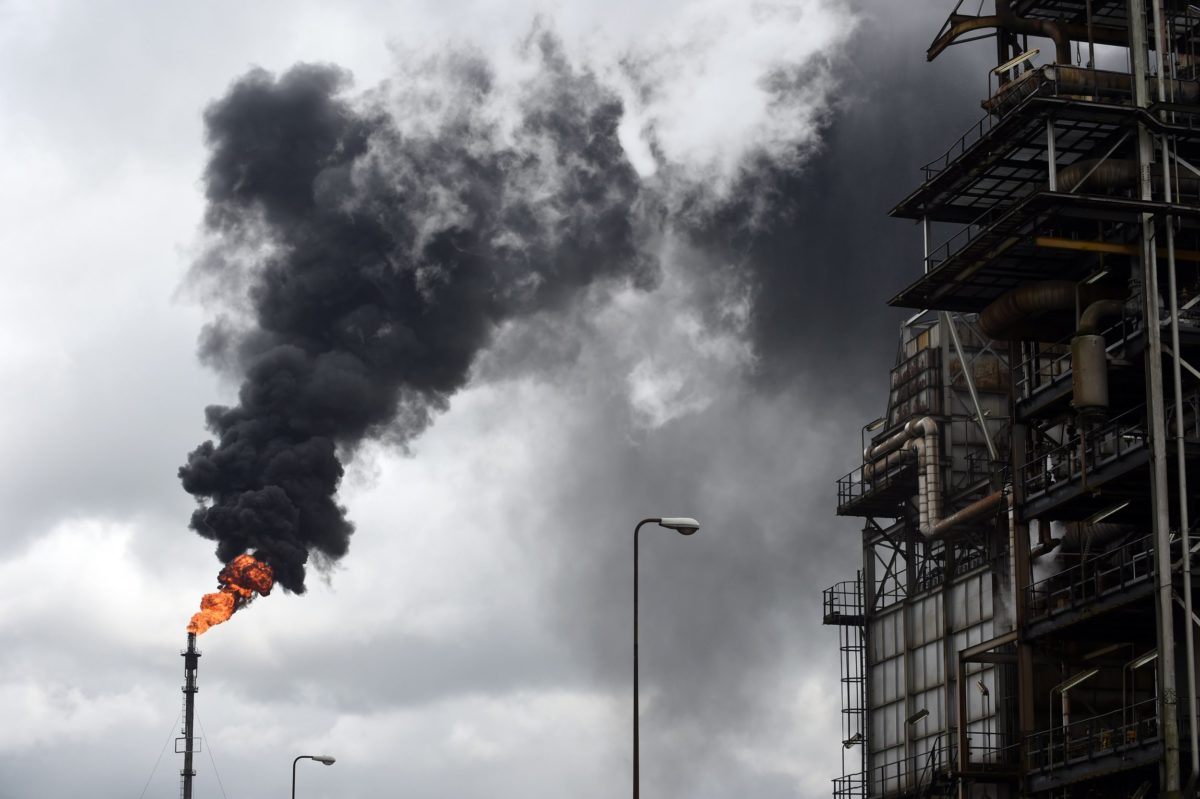There is no doubt that world war will be a part of the future. Christ plainly taught that there would be war prior to His return (Matthew 24:4-31). Some hold that He spoke generally of the Church age in verses 4-14 and spoke of the tribulation period starting at its mid-point in verses 15-31. Others believe that Christ spoke of only the seven-year period known as the tribulation in verses 4-31. Though verses 4-14 do seem to be giving general descriptions, they parallel the description given early in Revelation 6, which records details concerning the beginning of the tribulation. Matthew 24:6-7 says there will be “wars and rumors of wars…For nation will rise against nation, and kingdom against kingdom, and in various places, there will be famines and earthquakes.” Here, Christ makes it very clear that war will play a significant role in the last seven years prior to His return.
To be more specific, the future does hold at least one more world war. There is nothing in Scripture that says there will be only a certain number of world wars. World Wars I and II are not explicitly mentioned in Scripture, nor is a possible third World War. It is only the last war that is mentioned in detail, which allows the interpretation that there may be others before the final conflict.

The possibility of Iran attempting to close the Strait of Hormuz to tanker traffic has increased significantly in recent weeks, as has the possibility of a Persian Gulf War, especially with the Islamic Republics’ intentional destruction of a U.S. surveillance drone on June 20.
This act provides weight to Tehran’s threat that it will inflict a heavy toll on U.S. allies in the region if attacked by American forces and will not allow these same countries to export their oil if it can’t export its own.
The memory remains remarkably fresh in Iran of the 1951-53 oil embargo that toppled the democratically-elected government of Prime Minister Mohammed Mossadegh – and the CIA installing the despot Mohammad Reza Pahlavi, the so-called Shah of Iran, in his place.
The impact on oil markets of an Iranian closure of the Strait of Hormuz would be enormous.
Strait of Hormuz Closure
The leadership of the Iranian Navy and the Revolutionary Guard Navy, knowing they could never challenge the U.S. in a conventional naval contest, have been accumulating considerable asymmetric and other capabilities to enable the Islamic Republic to close the Strait of Hormuz since the “tanker war” in the Persian Gulf during the 1980-88 Iran-Iraq War.
These capabilities include thousands of sea mines, torpedoes, advanced cruise missiles, regular-sized and mini-submarines, and a flotilla of small fast-attack boats, most of which are concentrated in the strait region. Related: Oil Prices Set For Worst Weekly Drop In Five Weeks
Pentagon planners believe Iran would use all of these capabilities in an integrated fashion to both disrupt maritime traffic in the Strait of Hormuz and attempt to deny American and allied forces access to the region. Iranian naval forces are viewed as a “credible threat” to international shipping in the strait.
When commanding CENTCOM between 2010 and 2013, former Secretary of Defense Jim Mattis developed a multinational plan to minimize disruptions to maritime traffic in the Strait of Hormuz by preventing Iranian efforts to lay mines and systematically clear mines that have been deployed. The focus on mines was due to the assumption that they were the major means to hinder traffic as it is difficult to sink a modern double-hull oil tanker by torpedo or missile attack. A primary goal of the plan is to create ever-larger safe passages through minefields to allow movement of oil tankers to return to pre-crisis levels as quickly as possible.
There is a consensus among U.S. military planners that American and allied forces would ultimately prevail over Iran if it attempted to close the Strait of Hormuz. The most optimistic planners believe U.S.-led forces could reopen the straight within a few days, whereas the least optimistic ones believe it could take up to three months to restore maritime traffic to normal levels.
Of course, hostilities could spread from the Strait of Hormuz to elsewhere in the Persian Gulf region – and a regional war could break out even without Iran first closing the strait – in which case oil and gas production and export infrastructure would suffer significant damage.
If attacked by U.S. and allied forces, or if it believes an attack is imminent, Tehran may choose to launch airstrikes and missiles on American military forces and regional allies such as Saudi Arabia and the UAE while it still has the capability to do so. This ‘use them before you lose them’ strategy would largely be based on Saddam Hussein’s experience in Iraq.

Three Scenarios
The impact of closure of the Strait of Hormuz on global crude prices obviously depends on the amount of oil kept off the world market on a daily basis and the duration of the disruption. Based on the discussion in the previous section, we explore two scenarios that relate directly to the Strait of Hormuz and a third one that includes a Persian Gulf War.
In the Optimistic Scenario, where the Strait of Hormuz is only closed to commercial traffic for a few days, the impact on global oil supplies would be relatively minimal, but we would still see a brief spike above $100 per barrel due to the initial uncertainty surrounding its outcome. Crude prices would then quickly fall back to pre-crisis levels.
https://markets.businessinsider.com/commodities/oil-price?type=wti
The flow of 20.7 million b/d of crude and petroleum product would be curtailed if the Strait of Hormuz is fully closed, but this would be mitigated by almost 4 million b/d of crude being shipped on currently spare pipeline capacity across Saudi Arabia to Red Sea export facilities and the Abu Dhabi Crude Oil Pipeline bypassing the Strait of Hormuz.
In addition, Saudi Arabia has stored an undisclosed, albeit a relatively small amount of crude oil in a number of storage facilities around the world, including Rotterdam in Europe, Okinawa, and China in Asia, and the U.S. Gulf Coast.
Under the Pessimistic Scenario, the world’s oil emergency response system would be taxed to its maximum in the first two months of the crisis – assuming the Strait of Hormuz is fully closed for the first 45 days, and a straight line resumption in oil tanker traffic over the next 45 days – leading to historically high crude oil prices on an inflation-adjusted basis for an extended period.
Global strategic oil reserves would be more than enough to cover the shortfall in an overall sense, with 40 percent of the 1.9-billion-barrel total remaining post-crisis, but the rate of daily withdrawal from strategic reserves would pose a challenge.
Previous studies suggest that a maximum of 14.4 million b/d of crude and product could be released from the International Energy Agency (IEA) member country reserves in the first month and roughly 12.5 million b/d in the second month, compared to disruptions of 16.9 million b/d and 15.5 million b/d, respectively, based on our assumptions. Related: The Real Reason Why ExxonMobil Won’t Go Ahead With $53 Billion Iraqi Megaproject
China and India now account for about a fifth of global strategic reserves, and releases from their reserves would contribute to the IEA efforts – whereas commercial inventories around the world now tend to run on a just-in-time basis.
Based on an April 2018 study by the Riyadh-based King Abdullah Petroleum Studies and Research Center (KAPSARC), in a world without spare crude capacity – which in effect would be the case with the Strait of Hormuz closed – oil prices would have spiked above $325 per barrel at the height of the Libyan Crisis in June 2011. For the sake of scale, a mere 60 million barrels were released from IEA country stockpiles during that crisis.
Finally, in a Doomsday Scenario, where there is significant damage to Persian Gulf oil-producing and export infrastructure as well as a three-month closure of the Strait of Hormuz, crude oil prices would rocket into the stratosphere. They would not begin to fall back until the global economy collapses into a deep recession. A direct hit on Saudi Aramco’s Abqaiq oil processing facility alone could deprive the world market of 7 million b/d for a year or more as the plant is repaired.
The impact of this and other Persian Gulf production losses could be mitigated somewhat by the remaining 40 percent of the world’s strategic reserves, as well as 200 million b/d of crude that Saudi Arabia holds in reserve at home assuming Saudi export facilities remain relatively intact. Source
StevieRay Hansen
Editor, Bankster Crime
MY MISSION IS NOT TO CONVINCE YOU, ONLY TO INFORM…
#Fraud #Banks #Money #Corruption #Bankers,#Powerful Politicians, #Businessmen


![]()




